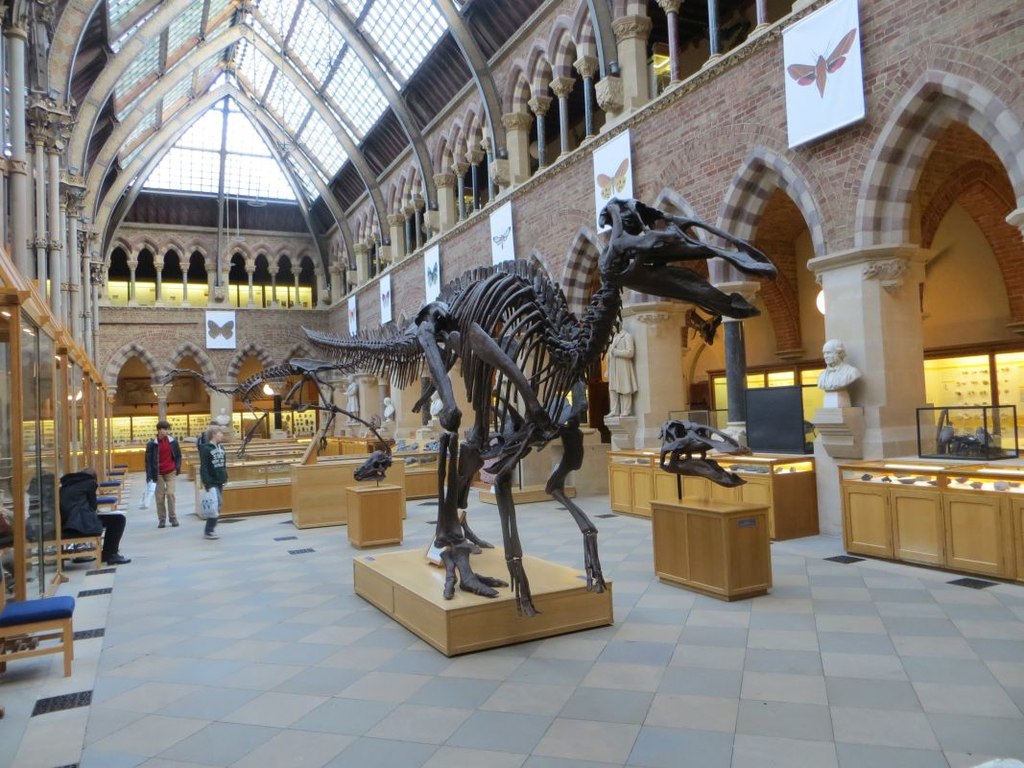When you think of prehistoric monsters, your mind probably leaps straight to the mighty T-Rex stomping across ancient landscapes. Yet honestly, the real titans of the past weren’t confined to land at all. They lurked beneath the waves, transforming the Mesozoic oceans into hunting grounds where creatures more terrifying than any Hollywood imagination could conjure ruled supreme.
Picture yourself diving into these ancient waters, where marine reptiles the size of school buses prowled the depths with jaws that could crush small cars. In the Mesozoic era, Ichthyosaurs, Plesiosaurs, and Mosasaurs, and other marine reptile groups were extremely common and occupied the top levels of the ancient ocean food chains. These weren’t your typical sea creatures – they were evolutionary masterpieces, perfectly adapted killing machines that dominated the oceans for over 150 million years. Let’s dive into the abyss and meet these incredible predators that made the Mesozoic seas their personal kingdom.
Liopleurodon – The Smooth-Sided Terror

Imagine encountering a predator so massive that it dwelt in the Earth’s oceans some 160 million years ago, was a formidable predator and was approximately 21-23 feet in length. Meet Liopleurodon, whose very name translates to “smooth-sided teeth” – a fitting description for this carnivorous nightmare that belonged to the plesiosaur family.
This beast wasn’t just another marine reptile swimming around looking intimidating. Liopleurodon lived in Western Europe from 166 to 155 million years ago, sharing its open ocean habitat with other marine reptiles, such as ichthyosaurs and plesiosaurs. Some anatomical studies have found that Liopleurodon was likely a very fast and agile swimmer, built for ambushing its prey from below. Think of it as the ocean’s perfect assassin, lurking in the depths before launching surprise attacks that left no escape route.
Pliosaurus – The Ultimate Marine Killing Machine
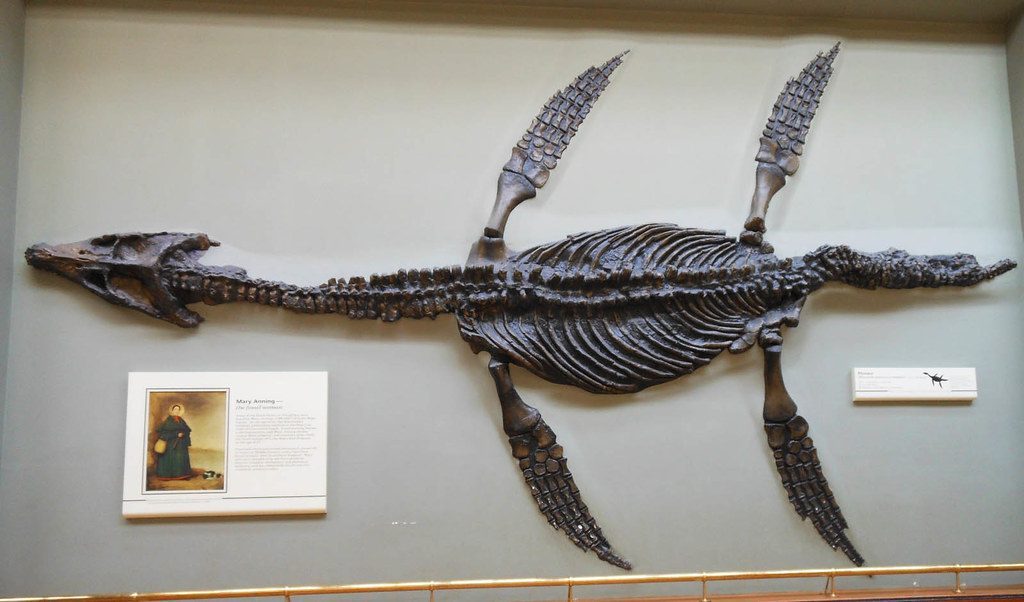
They were the largest members of Plesiosauria, reaching lengths of more than 11m in the case of Kronosaurus and Pliosaurus macromerus. They were also the largest marine reptiles for the majority of their existence, ruling the world’s oceans as apex predators for more than 80 million years. The genus Pliosaurus literally means “more lizard,” and these creatures certainly lived up to that intimidating name.
What made Pliosaurus particularly terrifying was its hunting strategy. Unlike basal thalassophoneans such as Peloneustes, which were better adapted to small, mobile prey, Pliosaurus appeared to favor a predatory strategy based on short, targeted bites, delivered to the back of the jaw where the force of pressure was greatest. It likely captured a wide variety of marine prey, ranging from medium-sized fish to smaller marine reptiles, which it subdued by firmly immobilizing with its robust jaws before crushing or swallowing them in dismemberment. Picture a crocodile’s patience combined with a great white’s power, but scaled up to nightmarish proportions.
Predator X (Pliosaurus Funkei) – The Arctic Giant

Originally dubbed “Predator X” before receiving its official scientific name, Pliosaurus funkei, spanned about 40 feet (12 meters) and had a massive 6.5-foot-long (2 m) skull with a bite four times as powerful as Tyrannosaurus rex. Found in the frozen Arctic waters of Norway, this discovery sent shockwaves through the paleontology world.
“They were the top predators of the sea,” said study co-author Patrick Druckenmiller, a paleontologist at the University of Alaska Museum. “They had teeth that would have made a T. rex whimper.” The creature was so formidable that Predator X was the name given to a mysterious marine reptile (not a dinosaur) excavated in Norway in 2009 that was estimated to have a bite force four times stronger than that of Tyrannosaurus rex. Its massive skull alone tells a story of absolute oceanic dominance.
Mosasaurus – The Great Sea Lizard

While pliosaurs ruled the earlier Mesozoic seas, the mosasaurs rose to power during the Late Cretaceous period. They were the last major group of marine reptiles to make an appearance ( around 94 million years ago) and while they weren’t quite as stocky as the thalassophonean pliosaurs, they did grow longer – the largest, Mosasaurus hoffmannii, reaching lengths of up to 17m. After ichthyosaurs and pliosaurs faced extinction in the early Late Cretaceous, mosasaurs took over and ruled the oceans up until 66 million years ago.
These weren’t your typical marine reptiles – they evolved from land-dwelling monitor lizards that ventured into the sea and never looked back. Before they fell to the same fate as the nonavian dinosaurs, this group of marine reptiles roamed the world’s oceans, chowing down on almost anything that moved, including other mosasaurs. A 2014 study in the journal Proceedings of the Zoological Institute RAS estimated that the mosasaur Mosasaurus hoffmanni grew to be around 56 feet (17 m) long. Picture a Komodo dragon that decided the ocean looked more appealing than dry land, then grew to the size of a sperm whale.
Ichthyosaurs – The Dolphin Mimics of Prehistory
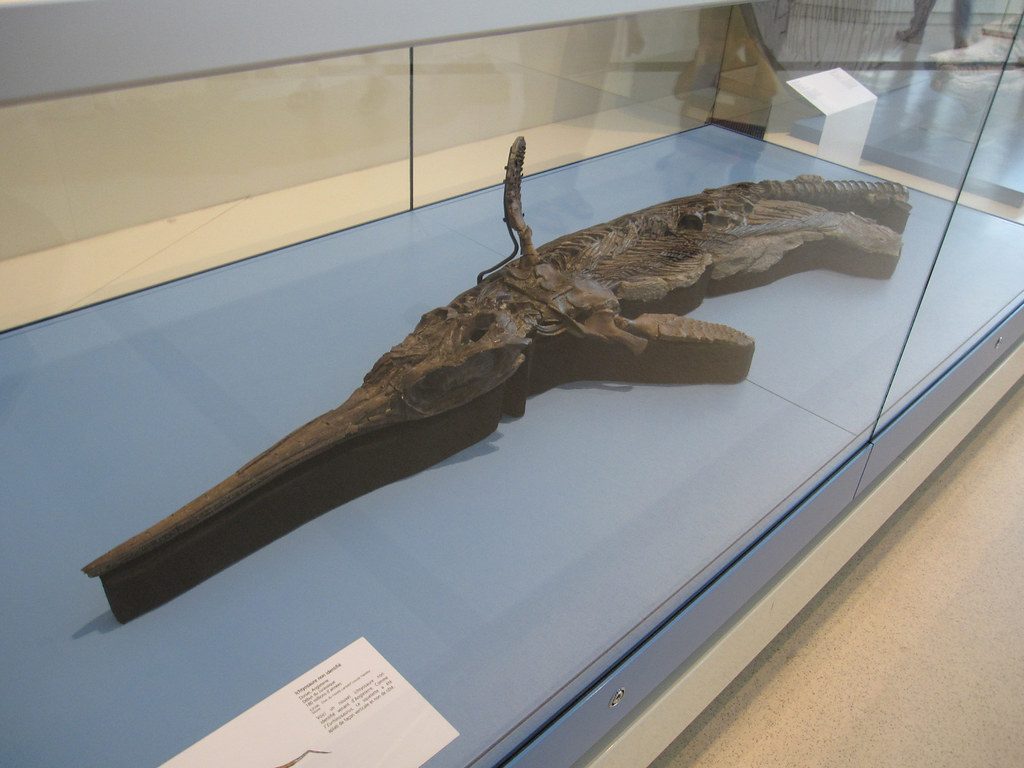
Ichthyosaurs were an order of marine reptiles that existed in the Mesozoic era. While some ichthyosaur species were about 1 meter (or 3 feet) in length on the smaller end, other species were massive. What’s more, the largest of these creatures reached remarkable sizes, and measured more than 20 meters long. These remarkable reptiles represented one of evolution’s most successful experiments in marine adaptation.
What’s fascinating about ichthyosaurs is how they developed almost identical body shapes to modern dolphins, despite being reptiles rather than mammals. Despite being reptiles, their bodies were similar to modern-day dolphins. Also, these marine reptiles evolved to have a streamlined body, elongated skull, and fins in order to adapt to the marine environment. Some specimens were so large that with a skull that is two meters long, the fossil suggests that it may have been even larger than a blue whale! It’s mind-blowing to think these ancient reptiles achieved sizes that rival today’s largest living animals.
Dakosaurus – The Marine Crocodile
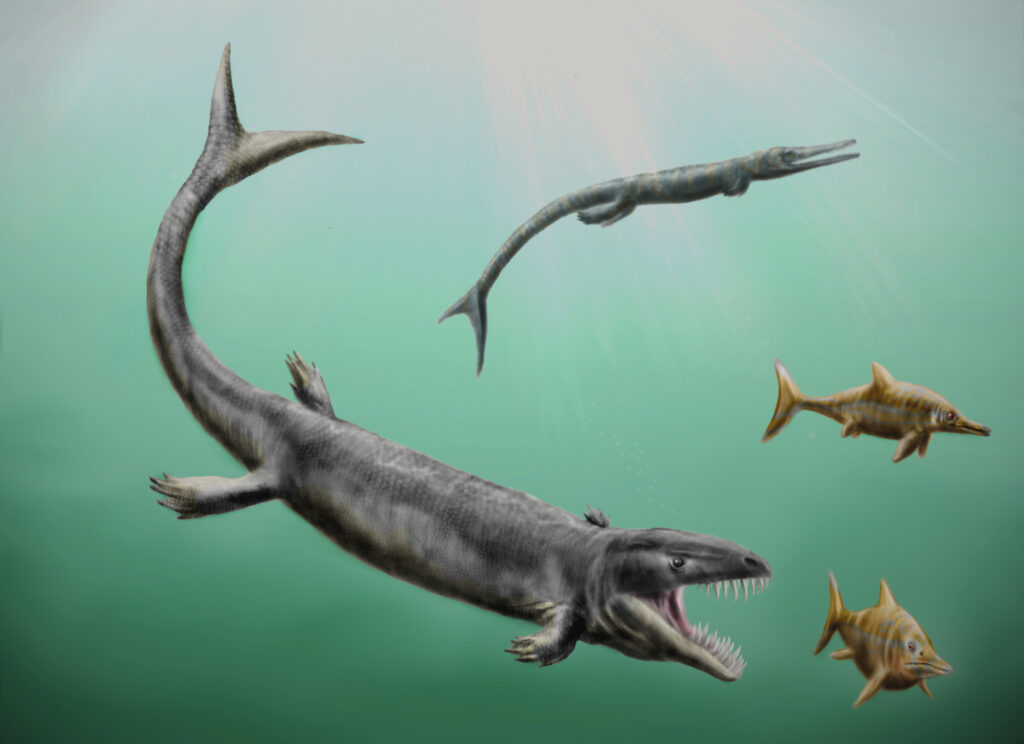
Think modern crocodiles are scary? In the Mesozoic Era and during the time of the dinosaurs, however, many of their extinct relatives, known as crocodylomorphs, lived in the open ocean. Dakosauruswas one of these seafaring crocodiles, inhabiting the warm, shallow seas that covered parts of Eurasia 157 to 137 million years ago. This wasn’t your typical riverbank lurker – this was a fully aquatic predator built for oceanic hunting.
Dakosaurus measured 5m in length and had the familiar, elongate body shape of a modern-day crocodile but the paddle-like fins of a sea turtle. It was perfectly adapted to a marine-based lifestyle and may have even spent its entire life at sea, hunting and mating underwater. Picture a crocodile that traded its legs for flippers and decided to make the entire ocean its hunting ground. The result was a formidable predator that could chase down prey in three dimensions rather than just lurking at the water’s surface.
Basilosaurus – The False Lizard Whale
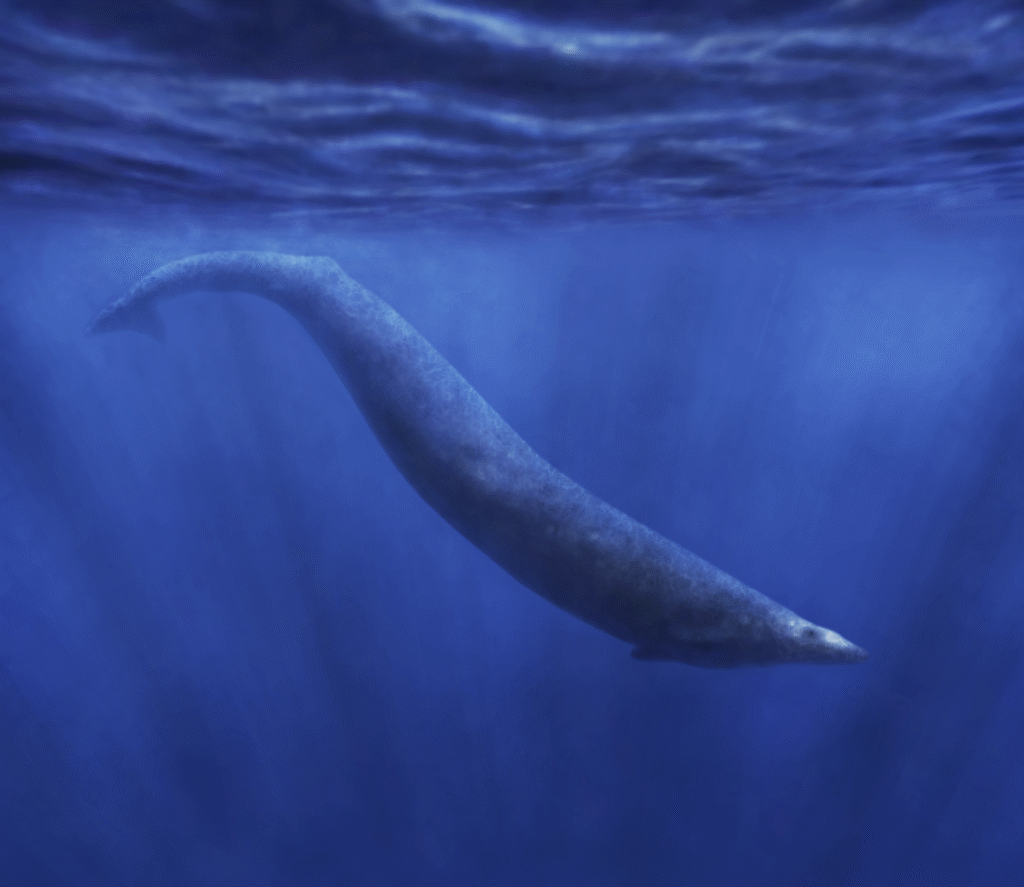
Here’s where things get really interesting. Basilosaurus swam through the ocean like a giant sea serpent from approximately 41.3 million to 33.9 million years ago, with a slender body that stretched up to 59 feet (18 m) in length. The name Basilosaurus translates to “king lizard” because the researchers who named it mistook the gigantic life-form for a marine reptile, like a mosasaur or ichthyosaur. The twist? This massive “sea monster” wasn’t a reptile at all.
But the species wasn’t a serpent or a lizard; it was a mammal, and a relative of modern whales, according to the University of Michigan’s Museum of Paleontology. Think about that for a moment – while marine reptiles were dominating the seas, mammals were quietly staging their own aquatic revolution. In fact, this 20m-long behemoth was a mammal and an early ancestor of today’s whales. Basilosaurus evolved from a land-dwelling animal that looked a lot like a goat. From goat to sea serpent – now that’s what I call an evolutionary success story.
Tanystropheus – The Impossible Neck Monster
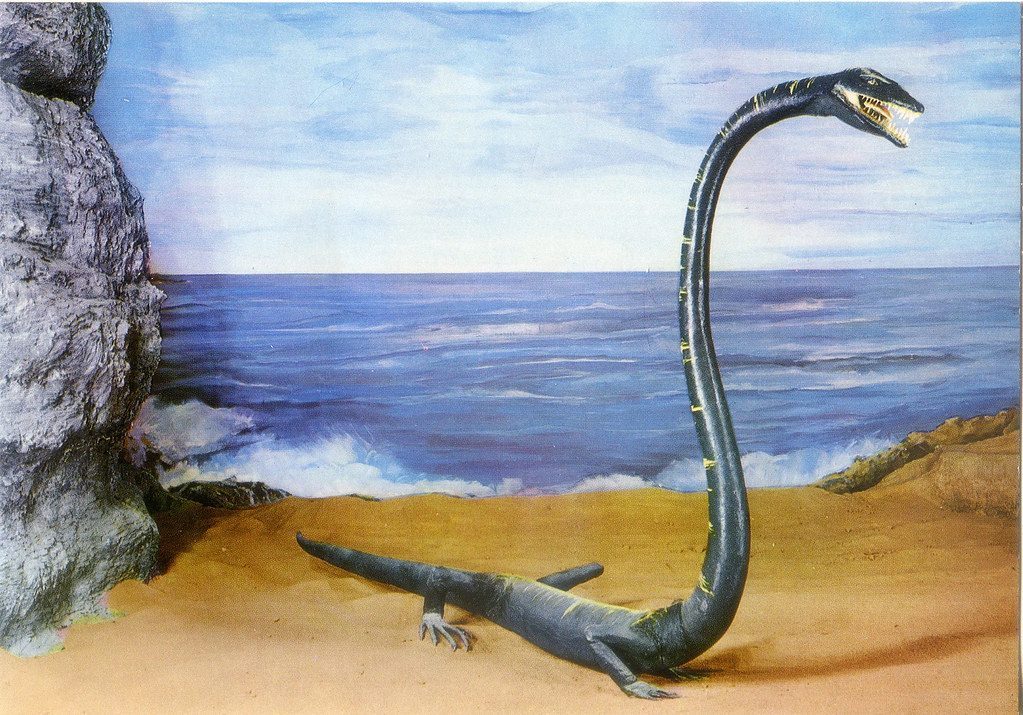
Tanystropheus hydroides lived in the Tethys Sea off the ancient supercontinent Pangaea, when all of the continents were joined together, during the Triassic period around 242 million years ago. Researchers identified these ancient marine reptiles from bizarre fossils located on what is now the border between Switzerland and Italy. They had weird, broomstick-like necks that stretched to 10 feet (3 meters) in length – three times the length of their torsos.
If you think giraffes have long necks, wait until you see this creature’s proportions. “Like [long-necked] plesiosaurs, tanystropheids have small heads on the front and these tiny, weird little bodies way behind this gigantic neck,” Caldwell said. Picture trying to design the most impractical marine predator possible, then realizing nature actually built it and made it work. This bizarre anatomy probably helped it snatch prey from unexpected angles, turning its ridiculous proportions into a deadly advantage.
Mauisaurus – The Neck That Defied Logic

This monster is named after the Maori god Maui, who pulled the islands of New Zealand up from the sea floor with a fish hook. The Mauisaurus, like other plesiosaurs, had a slender, long body, reaching over 26 feet in length. With 68 cervical vertebrae, the Mauisaurus is well known for having one of the longest necks (in terms of vertebra number) of any plesiosaur that existed.
The creature lived approximately 77 million years ago, and, as far as science can tell, was restricted to the waters of New Zealand. This regional specialist took the long-neck approach to an extreme that seems almost comical until you realize how effective it must have been. With 68 individual neck vertebrae, Mauisaurus could probably strike at prey from directions that seemed physically impossible, making it a true nightmare for any fish or smaller marine reptile unfortunate enough to encounter it.
Conclusion

The Mesozoic oceans were a theater of evolutionary drama where reptiles wrote the rules of marine predation. During the Mesozoic Era (252 to 66 million years ago), there were at least five hundred species, belonging to ten or so orders of reptiles. In fact, new ones are discovered every year. These ancient seas hosted an incredible diversity of predators that makes today’s ocean life seem almost tame by comparison.
From the crushing jaws of Pliosaurus to the serpentine grace of Basilosaurus, these nine marine monsters demonstrate that the true rulers of prehistoric Earth weren’t confined to land. They transformed the ancient oceans into hunting grounds where only the most perfectly adapted predators could survive and thrive. Their legacy lives on in the fossils that continue to amaze us today, reminding us that our planet’s waters once hosted creatures more spectacular than any science fiction could imagine.
What do you think about these incredible ancient ocean predators? Tell us in the comments which one you found most fascinating!



